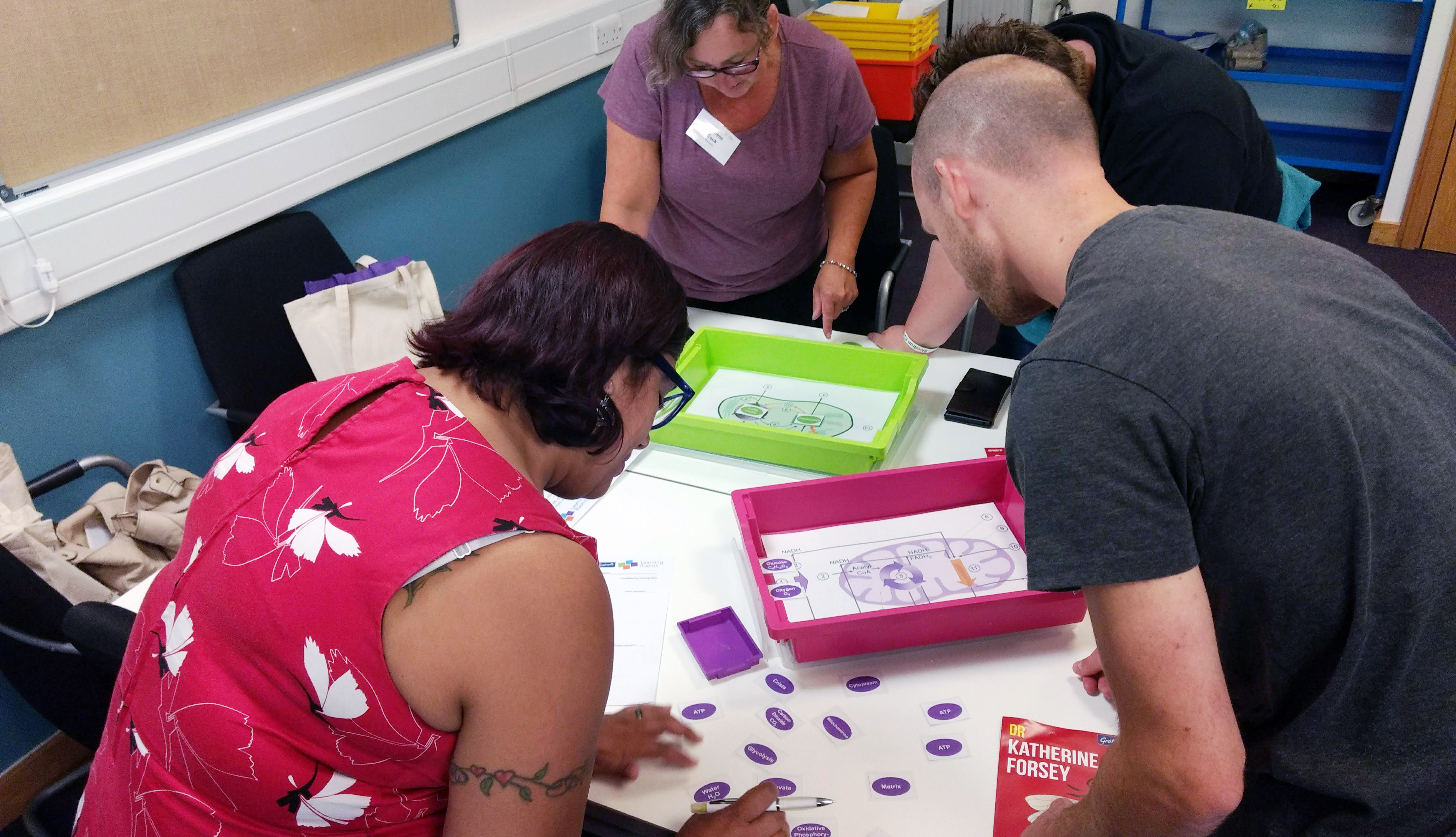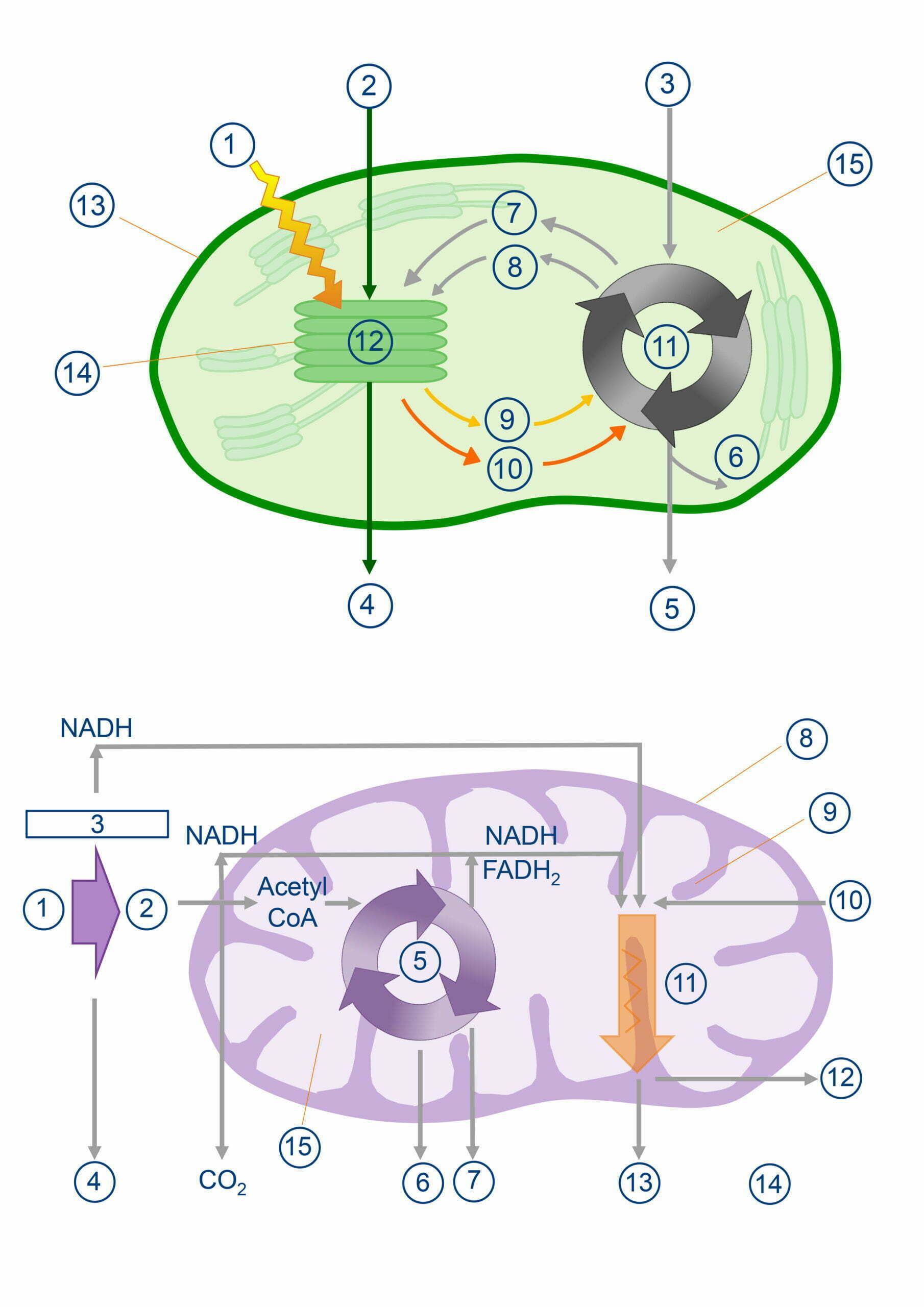Pathways
This activity was created as part of a Gratnells What’s In My Tray CPD workshop for secondary science technicians to support practical work and delivery of the curriculum. It can be carried out as a stand-alone activity for students or combined with other activities from the workshop to form a STEM carousel.
Turn your Gratnells trays into plant and animal cells.

You will need (per team of 4):
- 1 x shallow Gratnells green or jolly lime (F1) tray with lid
- 1 x shallow Gratnells pink (F1) tray with lid
- Photosynthesis and respiration overview diagrams and labels – download here
- 2 x mini tray to keep the labels tidy (optional)
- 2 x A3 laminating pouches (optional)
- 2 x A4 laminating pouches (optional)
- 2 x A3 paper
- 2 x A4 paper
- Colour printer
- Laminator (optional)
This activity also works as an individual challenge, just increase the amount of time allocated to complete it.
Preparation:
- Print the photosynthesis and respiration overview diagrams on A3 paper in colour.
- Trim to size to ensure a good fit inside the bottom of a shallow Gratnells (F1) tray, laminate and trim again (laminating is optional).
- Put the photosynthesis overview in the bottom of a green shallow Gratnells (F1) tray.
- Put the respiration overview in the bottom of a pink shallow Gratnells (F1) tray.
- Print the photosynthesis and respiration overview diagram labels on A4 paper in colour.
- Cut out each label, laminate and cut out again (laminating is optional).
- Put the green photosynthesis labels into a green mini tray (use of the mini trays is optional) and place into the green shallow Gratnells (F1) tray with the overview diagram. If you don’t have any mini trays then just pop the laminated labels into the corner of the shallow Gratnells (F1) tray.
- Put the purple respiration labels into a pink mini tray and place into the pink shallow Gratnells (F1) tray with the overview diagram.
- Put the lids on both shallow Gratnells (F1) trays.
What to do:
- Lift the lid on these plant and animal cells and take a look at what is going on inside the chloroplast and mitochondrion.
- Working in the tray, use the cards provided to label the diagrams by placing the labels over the numbers. Every number has a corresponding label.
- Write down your answers or fill in the answer sheet provided – download here
- 1 point for each correctly identified part of a pathway. 30 points available in total.
- When you have finished, or at the end of the allotted time, put the cards back into the appropriate mini trays or shallow tray and replace both lids.
This activity can be repeated as many times as required and can be completed by individuals or small groups.
Answers:
Photosynthesis
- Light
- Water H2O
- Carbon Dioxide CO2
- Oxygen O2
- Glucose C6H12O6
- Starch (storage)
- NADP+
- ADP + P
- ATP
- NADPH
- Calvin Cycle (Light Independent Reactions)
- Light Dependant Reactions
- Chloroplast
- Thylakoid
- Stroma
Respiration
- Glucose C6H12O6
- Pyruvate
- Glycolysis
- ATP
- Krebs Cycle
- ATP
- Carbon Dioxide CO2
- Mitochondrion
- Crista
- Oxygen O2
- Oxidative Phosphorylation
- Water H2O
- ATP
- Cytoplasm
- Matrix
For more images and videos of this activity taken at the National Technicians Conference in York see here.
Health & Safety
As with all Gratnells Learning Rooms What’s In My Tray Activities, you should carry out your own risk assessment prior to undertaking any of the activities with children.


